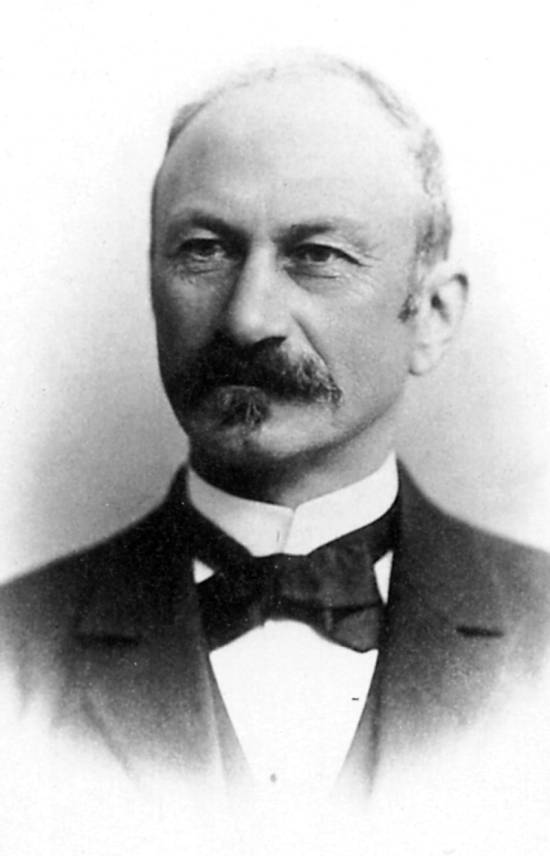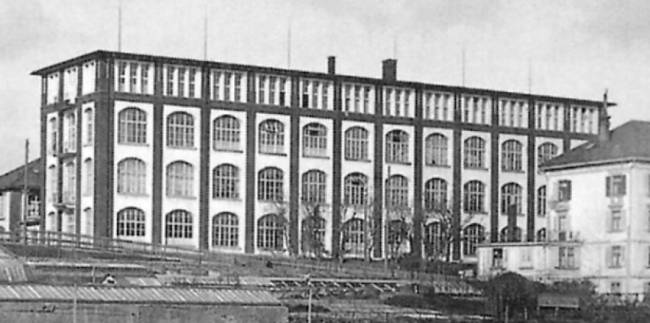| |
The
Firm of Iklé Frères (15)
the Iklé family became important for St Gallen, its
industry, and also for the textile museum.
Father Iklé sold muslin goods from St Gallen in Hamburg,
and is said to have received machine-produced
embroideries from his son Leopold as
early as 1854.
Leopold, who was born in 1838, received orders from
Denmark, Sweden and Russia. Aged 19, he travelled
to St Gallen as a purchaser, and it was then
that the town of St Gallen granted him the right of
residence.
Subsequently, there came the time of a
general expansion in the machine embroidery industry, and
this also happend to Iklé's enterprise: at the start of
the 1870s, brother Adolf Iklé entered
the St Gallen business. In 1880, Iklé's firm
produced the first Schiffli embroidery in Eastern
Switzerland which underwent considerable
expansion in 1895 and 1907.
The connections with the world's
metropolises proved to be of great importance: brother Ernest
settled in Paris in 1871; soon afterwards a
branch was established in England (Ernest's daughter
married her cousin Max Jacoby whose
brother opened in 1885 the branch Jacoby-Iklé Ltd in
London). There were warehouses in Berlin, Vienna
and New York.
Leopold Iklé, initially a
business man, became more and more interested in old lace
and embroideries; he first used them as patterns
for the industry and soon became a passionate
collector.
Around 1900, he gave a large part of his collection to
the St Gallen Textile Museum, and this donation became an
important foundation pillar of the present museum
collection.
|
|
Ernest Iklé in Paris was mainly interested in
the technology of the machine-produced
embroideries, and he edited a basic work about
machine embroidery (16). This work also
formed the foundation of an exhibition which was held in
the St Gallen Textile Museum from 1932-45.
In addition to white embroideries, Ernest
Iklé also described in his book coloured machine
embroideries, such as the "cravattes
brodées" which were especially popular
between 1872 and 1882, or whole sets for robes, later cross
stitch for bags or splendid dress
fabrics. Corresponding patterns can be found not
only as illustrations in Iklé's books, but also among
the fabric samples in the sample books of the firms which
are discussed here.
Nevertheless, coloured embroideries were in the minority,
and - accordingly to a report about the world exhibition
in Paris - they formed only one quarter of the exported
machine embroideries; in the USA, their relation to white
embroidery was only 1:25 (17).
The yarn used was a coloured silk thread, specially
produced for machine embroidery, since the normal silk
yarn disintegrates during the process of embroidering on
the machine.
A designer (18) at
Rittmeyer's described in his memoirs the work process for
coloured embroideries:
first the choice of colour was noted on a piece of paper,
as an instruction for the threader. A flower or a
butterfly often contained 20 or more colours, and
frequently, the painted original pattern had do be
translated freely into different shades (19).
To revert to Ernest Iklé's
collection: this manufacturer donated to the
Textile Museum his meticulously dated collection which
presents an important testimony of the production in the
nineteenth and twentieth centuries.
|


